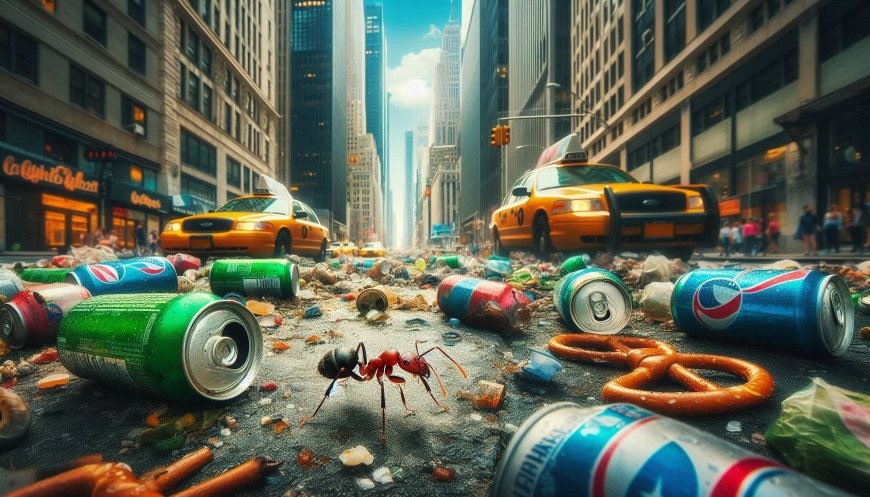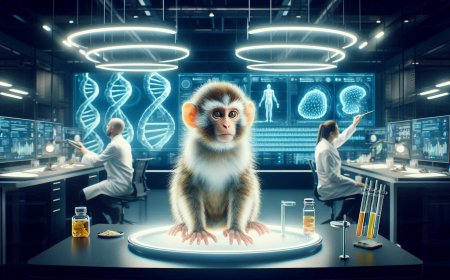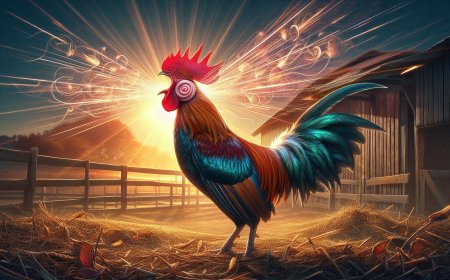The Ants of Broadway: A Story of Urban Survival
Discover the fascinating story of the ManhattAnt, a resilient ant species thriving in the heart of Manhattan. Explore its unique diet of urban food waste, its adaptability to city life, and the surprising biodiversity within urban environments. Learn how this tiny creature symbolizes nature's resilience amidst towering skyscrapers and bustling streets.

In the bustling heart of Manhattan, amidst skyscrapers, honking taxis, and the perpetual hum of city life, a small yet extraordinary creature has quietly made its mark. Meet the ManhattAnt, a resilient ant species that calls New York City home. But this isn’t just any ant—it’s an insect born of the city’s concrete canyons, thriving on human habits and the leftovers of an urban landscape.
The story of the ManhattAnt begins in an unexpected place: between the cracks of Broadway’s sidewalks on the Upper West Side. There, between 63rd and 76th Streets, biologist Rob Dunn and his team from Columbia University stumbled upon a peculiar species that seemed tailor-made for city living. Unlike its rural relatives, the ManhattAnt wasn’t content to scavenge typical woodland fare. Instead, it feasted on the byproducts of city life, developing a diet that reads more like a menu at a fast-food joint than an entomologist’s guidebook.
The ManhattAnt is a connoisseur of human food waste—particularly foods rich in corn syrup, a staple of many processed snacks tossed away in trash bins and on city streets. This sugary feast has shaped the ManhattAnt’s biology, leading to a carbon-heavy diet that sets it apart from other ants. Each discarded soda can or half-eaten pretzel left behind by a pedestrian becomes a buffet for these tiny survivors, highlighting how deeply urban species can adapt to the human environment.
But there’s more to this story than a penchant for junk food. The ManhattAnt is a symbol of urban resilience, embodying nature’s incredible ability to adapt and thrive, even in the most unlikely places. While cities are often viewed as barren, devoid of natural life, the ManhattAnt’s emergence tells a different story—one of evolution, survival, and the unexpected biodiversity found within urban jungles.
What makes the ManhattAnt truly unique is not just its diet, but its spirit. It’s a testament to the idea that life finds a way, even in the shadow of towering buildings and beneath the feet of millions. While other species might struggle to navigate the relentless pace of city life, the ManhattAnt has turned New York’s chaos into its playground. It scurries through bustling parks, scales gritty sidewalks, and turns trash bins into treasure troves—all while continuing to evolve, unnoticed by the busy New Yorkers rushing past.
The ManhattAnt isn’t alone in its quest for urban domination. Across the world, cities are becoming evolutionary hotspots, teeming with creatures that have adapted to urban challenges. From pigeons that distinguish between crosswalk signals to raccoons that master the art of opening garbage lids, the story of the ManhattAnt is just one chapter in the broader tale of urban wildlife adaptation.
Yet, the discovery of the ManhattAnt also carries a message for us humans. It’s a reminder that cities are not just for people—they are ecosystems, vibrant and full of hidden life. The presence of these adaptable ants urges us to rethink our relationship with urban nature. It pushes us to consider the green spaces, parks, and rooftops that can serve as havens for other remarkable creatures navigating the concrete jungle.
So, the next time you walk down Broadway, spare a thought for the tiny ManhattAnt scuttling beneath your feet. Its story is one of tenacity and adaptation, of survival against the odds. The ManhattAnt is more than just an insect—it’s a symbol of nature’s ability to embrace change and flourish in the heart of human civilization.
As cities grow and transform, creatures like the ManhattAnt remind us that urban landscapes are not just human domains. They are shared spaces, where wildlife and people co-exist in unexpected ways. The ManhattAnt’s journey is far from over. With every discarded snack and overlooked crevice, it continues to write its story, one crumb at a time, proving that even in the city that never sleeps, nature is wide awake.
What's Your Reaction?







































































































